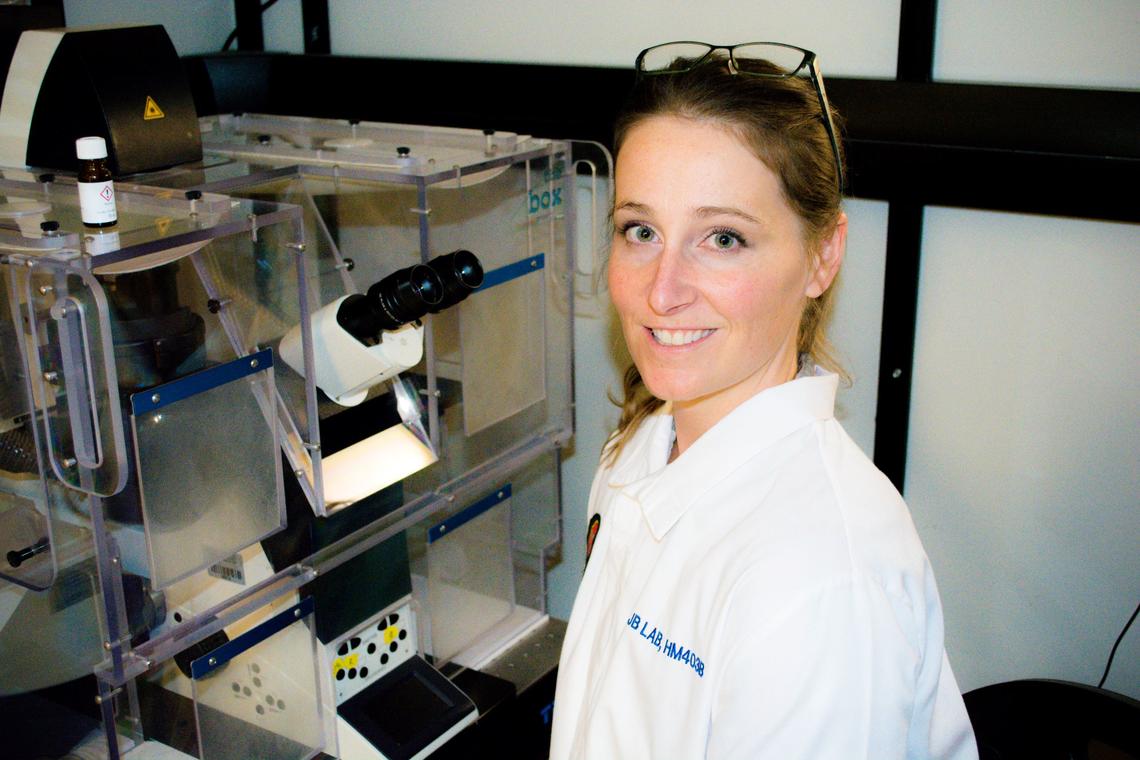Dec. 9, 2020
Bridging the gap between veterinary and human musculoskeletal health

Dr. Holly Sparks, DVM, PhD, always loved a good mystery.
Sparks, who grew up riding horses and working at local stables in her native Michigan, was interested in both animals and medicine at a very young age. “Even as a child, I loved solving problems and asking ‘why,’” says Sparks. She decided to combine her interest in medicine, her passion for discovery, and her love of animals to become a veterinarian and board-certified large animal surgeon. “In veterinary medicine, we have to use different approaches to investigate medical problems for our patients because they can’t tell us what they are feeling. It is very exciting and rewarding to use our clinical and diagnostic tools to solve the mystery of what’s causing our patient’s problems."
Sparks was working full-time in clinical practice when she realized her real passion was in research. “Evidence-based practice in veterinary medicine has a lot of room to grow. Like our colleagues in human medicine, we experience constant reminders of how much we have to learn about the body’s response to injury or disease,” says Sparks. “Ultimately, I decided I wanted to dedicate my career to trying to answer these clinical questions and improve treatment options for my patients through research.”
Sparks pursued a PhD with UCalgary researcher Dr. Jeff Biernaskie, PhD, an expert on regenerative medicine and the prevention of scar tissue, or fibrosis, after severe skin injury. In the Biernaskie lab, she gained substantial expertise in using cutting-edge approaches to examine the causes of fibrosis, with the goal of preventing its development. Now as a clinician-scientist, she aims to use her combined skills and knowledge to explore athletic injuries in horses.
Horses get athletic injuries, too
“The unique thing about working with horses is that they are true athletes and develop injuries akin to their human counterparts. Superficial digital flexor tendon injuries, for instance, are one of the most common athletic injuries in racehorses. Unfortunately, they not only heal slowly, but they also heal through the production of scar tissue,” says Sparks, who is now an assistant professor in the Faculty of Veterinary Medicine at the University of Calgary and a new McCaig Institute member.
That scar tissue prevents the normal biomechanical function of the tendon. When horses are racing, they are already at their limits, so that tendon needs to work almost perfectly. “Unfortunately, the majority of horses that sustain this injury never return to racing, and of those that do, about half experience reinjury.”
Horse and human tendon injuries are remarkably similar
Certain types of musculoskeletal injuries occur naturally in both horses and humans, and the anatomy is remarkably similar. For example, the athletic injury of the equine superficial digital flexor tendon is very similar to an Achilles tendon injury in humans. Injuries in these tendons, for both humans and horses, are debilitating. As such, Sparks’ work on equine tendon injury will not only be important within the field of veterinary medicine but can also be readily translated to comparable human conditions.
“Ultimately, the goal of my research program is to better understand the cellular and molecular events leading to fibrosis after musculoskeletal injuries and to develop regenerative medicine approaches to improve outcomes for both animal and human patients.”
For more information about the McCaig Institute for Bone and Joint Health, click here.

Rahil Tarique


